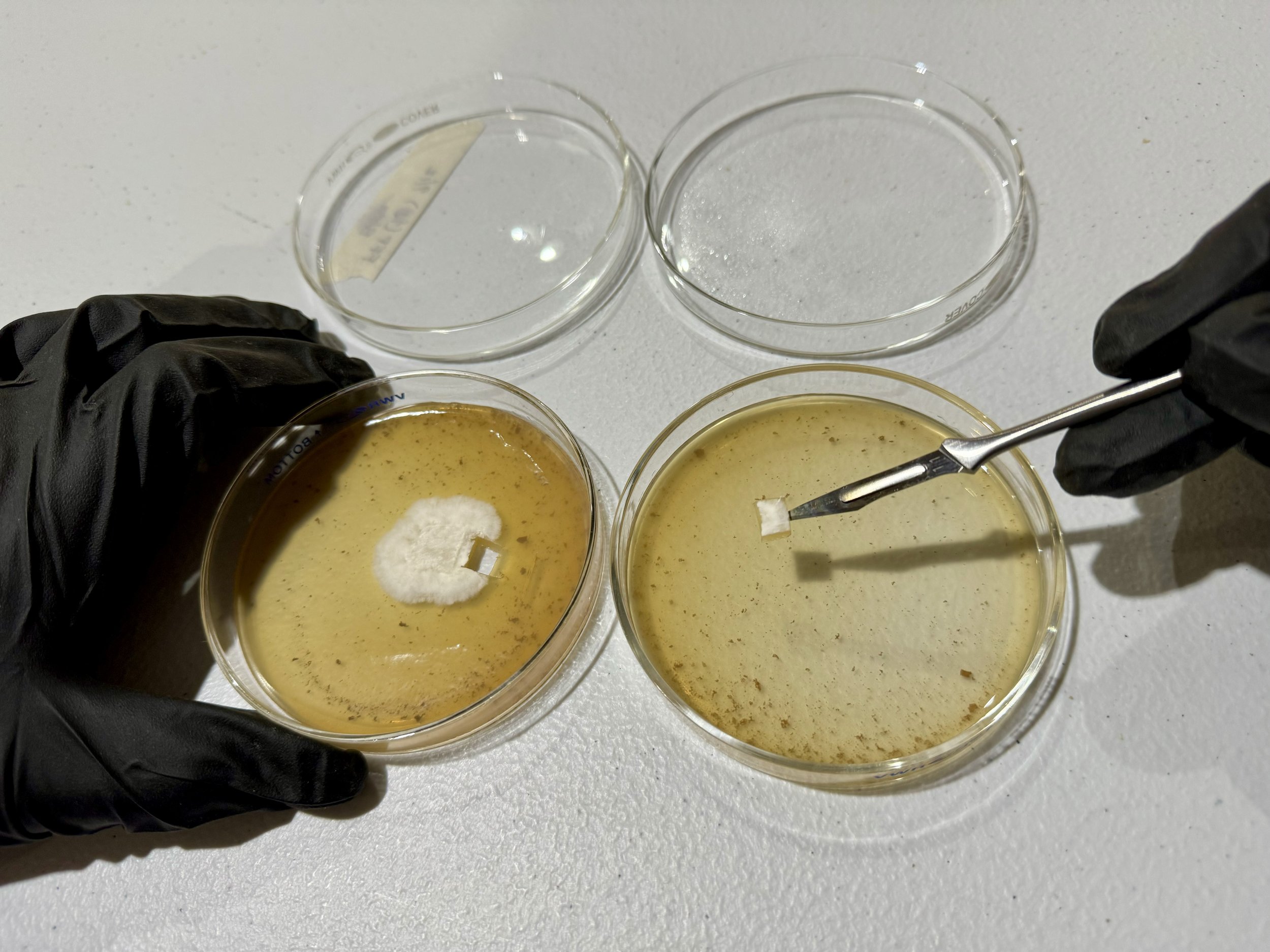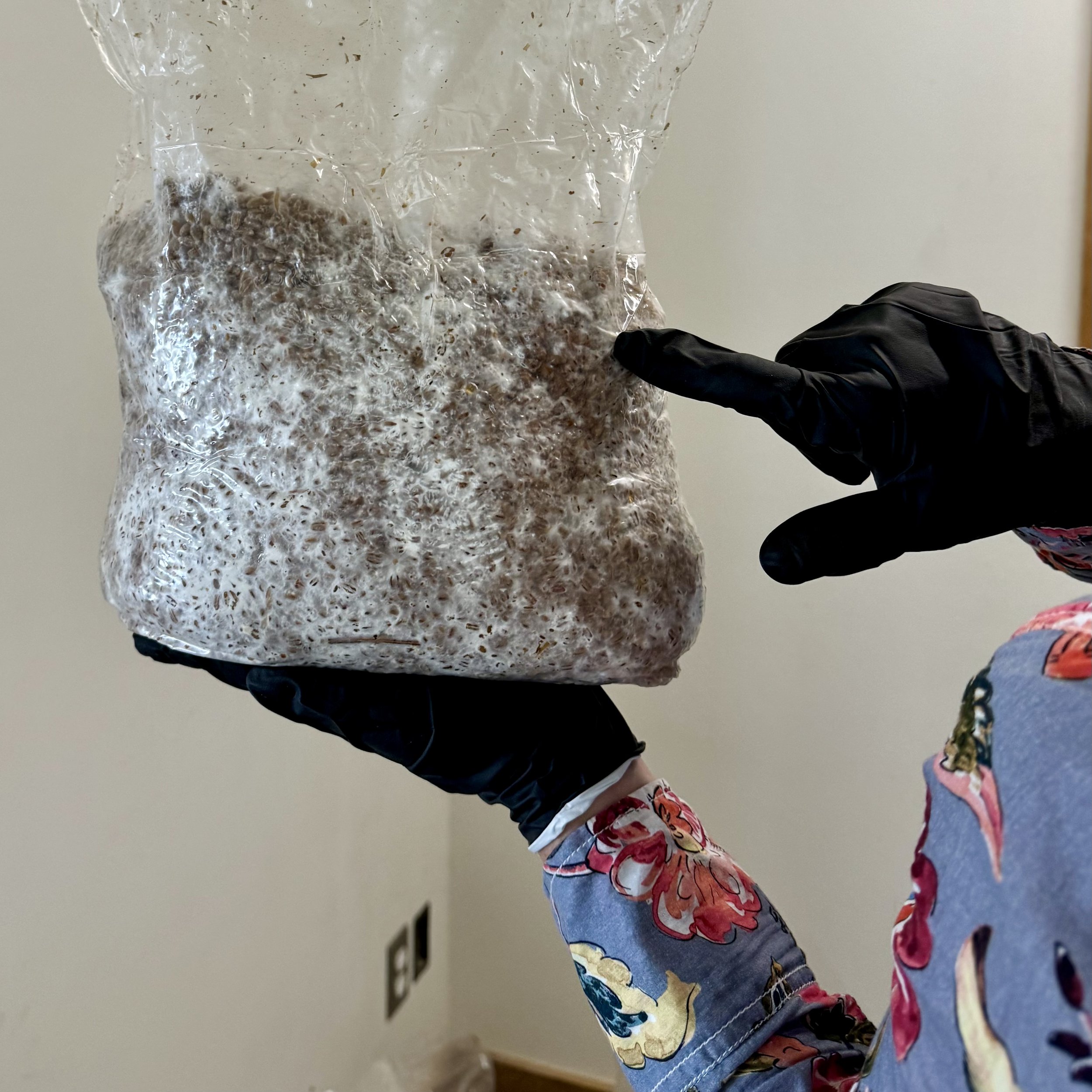The Mushroom Growing Process
At Monumental Mushrooms we take pride in our sustainable, efficient, and clean approach to mushroom cultivation. With a focus on environmental control, facility hygiene, and minimizing waste, every step is designed to ensure an abundance of delicious petals for picking. Here’s a brief overview of the petri dish to plate mushrooms growing process.
1. Petri Dish Cultivation: From Tissue Sample to Mycelium
Our mushroom propagation begins with petri dishes, where we introduce tissue samples. Some of these tissue samples are cultivated in-house from our own mushroom stock, while others are sourced from trusted suppliers. We also create spore prints from mature mushrooms, capturing the spores that fall from the gills or pores of the fruiting body.
In addition to tissue samples and spores, we also use mycelial fragments suspended in a nutritional broth of sugars, nitrogen, and other key nutrients for strong and healthy mycelial growth. The mycelium—the vegetative body of the mushroom—colonizes the petri dish, feeding on the nutrients provided.
When looking for a clean tissue sample to carry into the next step of the process our Mad Scientist, Rhysa, is looking for “zero contamination and a fast rate of growth in an appealing pattern – also known as silken lightening bolts!” she says.
“We are looking for zero contamination and a fast rate of growth in an appealing pattern – also known as silken lightening bolts!”
2. Transfer to Grain Spawn
Once the mycelium has proven viable in the petri dish, we transfer a clean tissue sample to sterilized grain. This grain is prepared using a pressurized heat sterilizer which eliminates contaminants.
The combination of the sterilized grain and the tissue sample creates a master culture, which is sealed in a micro-filtration bag to prevent outside contamination while allowing airflow for the mycelium to breathe. Over the next few weeks, the mycelium will fully colonize the grain, transforming it into nutrient-rich spawn.
3. Colonization of Sawdust
Once the grain spawn is fully colonized, it’s time to broadcast the master culture into sterilized sawdust. True to our “nothing goes to waste” principle we source our sawdust through symbiotic relationships with businesses that create it as a bi-product like Lincoln Woodworks and Fruita Wood and BBQ Supply. We collect the sawdust in giant burlap sacks, sourced from local coffee roasters. Then, we sterilize the sawdust using a lab-grade autoclave to prevent contamination. Similar to the grain spawn, the sawdust is packed into micro-filtration bags, where the mycelium continues to grow and thrive.
Depending on the mushroom species, the inoculated sawdust incubates for anywhere from a week to two months. During this time, it develops the foundational structure that will eventually support fruiting bodies we love to eat!
4. Fruiting: Controlled Conditions for Optimal Growth
When the sawdust is colonized, we must provide escape hatches out of the bag so the mushrooms can emerge. We either cut holes in the bags or remove their tops entirely, depending on the mushroom variety we are cultivating and the desired fruit size.
The fruiting blocks are then placed in our grow tents which are carefully controlled environments. We manage humidity, light, temperature, and airflow to replicate the natural conditions mushrooms need to grow. Fruiting can take anywhere from a few days to a couple of weeks.
5. Facility Hygiene: Keeping It Clean
We follow strict protocols to maintain facility hygiene. For some farmers, a mantra is “hoeing is farming” or “mowing is farming” but here it’s “mopping is farming” – we are constantly swabbing the deck! We also use UV sterilizers to sanitize equipment.
6. Harvesting and Composting
Our mushrooms stay in the pristinely clean grow room for no longer than six weeks, as the mycelium’s immune system begins to weaken after multiple fruiting cycles. It’s important to harvest at the right time to ensure the mushrooms are at peak quality.
Currently, the spent blocks are composted at a nearby farm. We are in the process of developing a system for creating garden soil additives as an additional product offering to our customers.
7. Packaging & Delivery
When our mushrooms are ready to be harvested, this step is taken with the utmost care. Mushrooms are delicate and must be handled gently. We arrange the petals in the most beautiful way, for your enjoyment, in compostable containers.
To get the most out of your Monumental Mushrooms, check out this article: Tips for Storing and Cooking Fresh and Dried Mushrooms.





